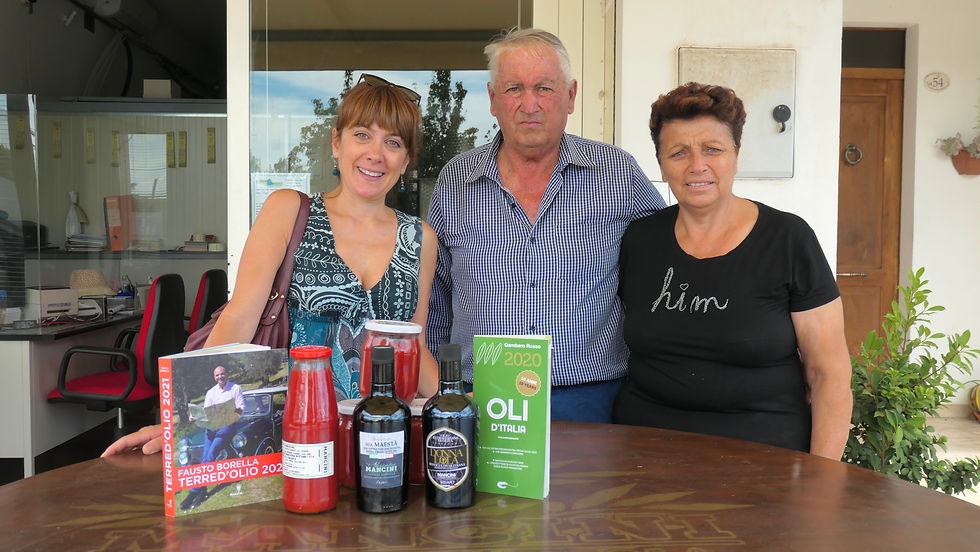
The Alessandro Mancini olive groves and mill are situated a couple of miles from the famous Trabocchi coast of Abruzzo between the towns of Vasto and Ortona. The trabocchi are the old wooden fishing platforms, some of which are now falling apart and others that have been converted into unique and atmospheric restaurants. We dined at one several years ago and had a fabulous multi-course dinner perched over the Adriatic and I think it might be the same one in the photograph below that we took this month.
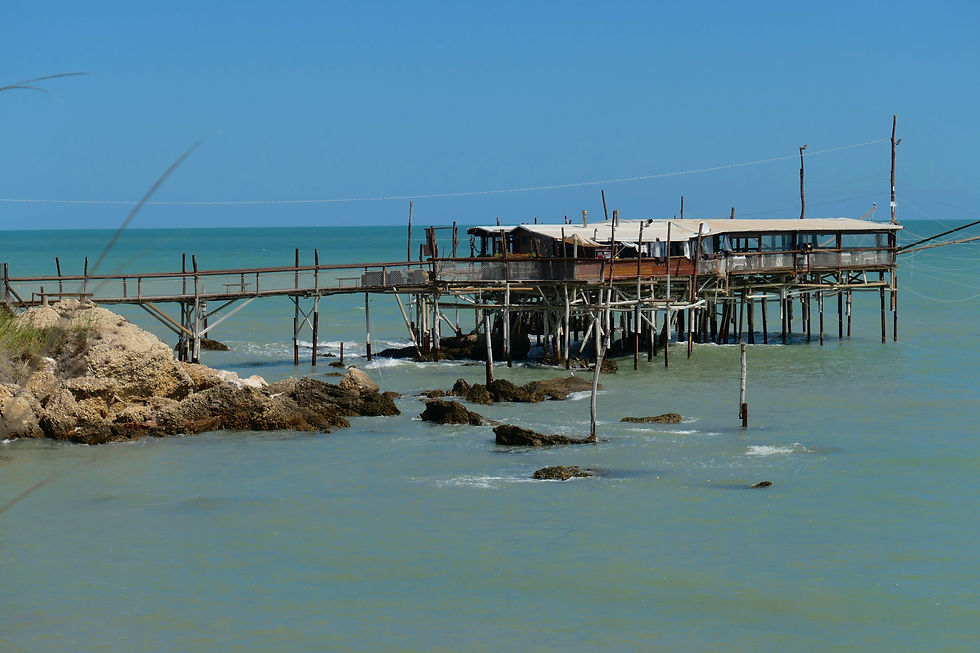
Also close to Mancini’s olives in Fossacesia is the Sangro river which formed the eastern end of the Gustav line during the Second World War. Some of the fiercest fighting took place here in late 1943 and in the nearby town of Ortona, which still bears the scars today. There's a lot to see and do in this area which is still one of the most underrated holiday destinations in all of Italy. Both of us have developed a real affection for Abruzzo after several trips here and some of that is due to its variety of excellent wines and olive oil.
The Mancini brothers' farm was started in 1997, initially just producing vegetables, especially tomatoes, and then in 2000 they planted 500 olive trees. Their olive oil business began in earnest in 2008 when they bought their employer's mill after spending ten years as employees. Convinced that they could run the company better and improve the olive oil, they modernized the olive mill equipment and streamlined the operational side of the business. They now have 2,500 trees on 20 acres of land comprising 6 different cultivars, all of which results in 30,000 liters of olive oil production annually.
Our visit in the first days of September was exactly at the wrong time of year because if your oil is any good it will mostly be gone by September, but we managed to buy a couple of their last remaining bottles of the two olive oils we were particularly interested in trying. The harvest takes place in October every year with the new oil being ready almost immediately so the ability to visit olive oil producers and have your pick of their oils is yet another good reason for visiting Italy in the first few months of the year before the tourist season gets underway.
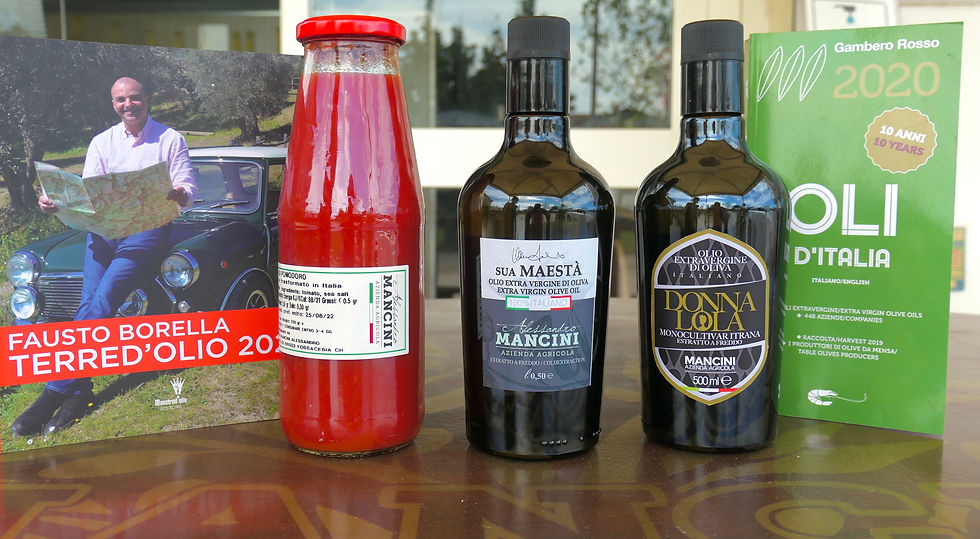
One of the cultivars Alessandro grows is the Itrana olive which is originally from the area around the town of Itri just south of the Pontine Marshes in Lazio. Itrana is an olive with a distinctive taste and the unusual characteristic of a very late ripening in March, whereas most olives traditionally ripen in November. This olive can be picked in its ‘white’ unripened state in November and put into brine and then served with fish or cheese or it can be harvested fully mature in March to be processed into oil or used for various other traditional food preparations.
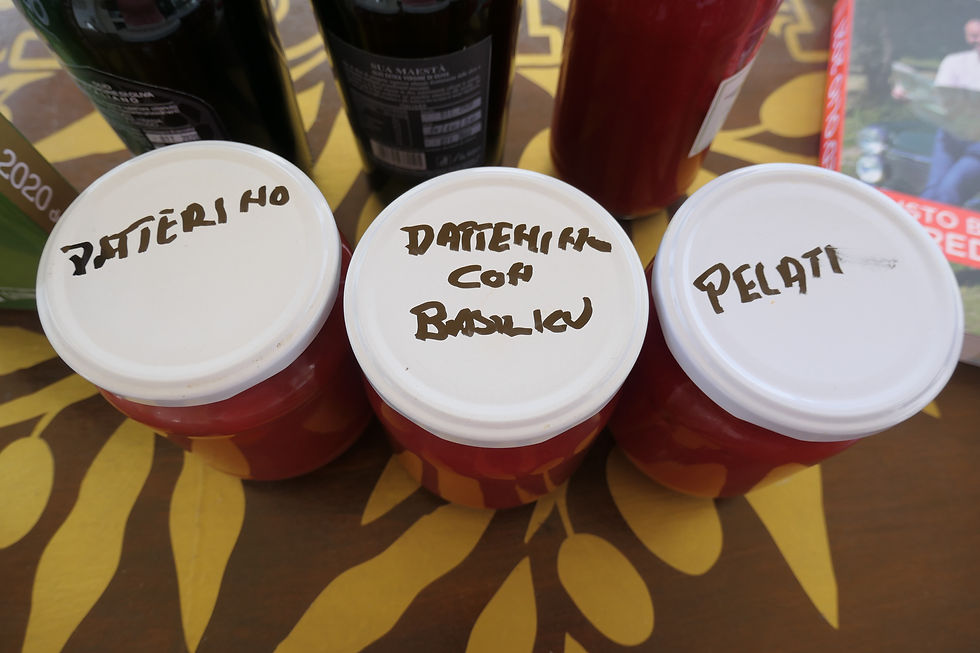
It’s very unusual to see this olive being cultivated in Abruzzo but it seems to do very well and the Donna Lola olive oil that Alessandro produces from 100% Itrana is one of his most sought after and highly praised oils and fortunately we managed to come away with a bottle.
Alessandro's first love before olive oil was farming tomatoes and he continues to grow them today, producing a range of passata of a quality that you could never find in a supermarket, even in Italy. It's not the sort of passata that is thin and watery, but contains real chunks of ripe pomodori pelati. Just add salt, olive oil and cook for ten minutes. In fact the first night back in Lucca this was the perfect simple dinner for us tossed in spaghetti but the remaining jars we will save until the winter when fresh tomatoes are always a bit disappointing.
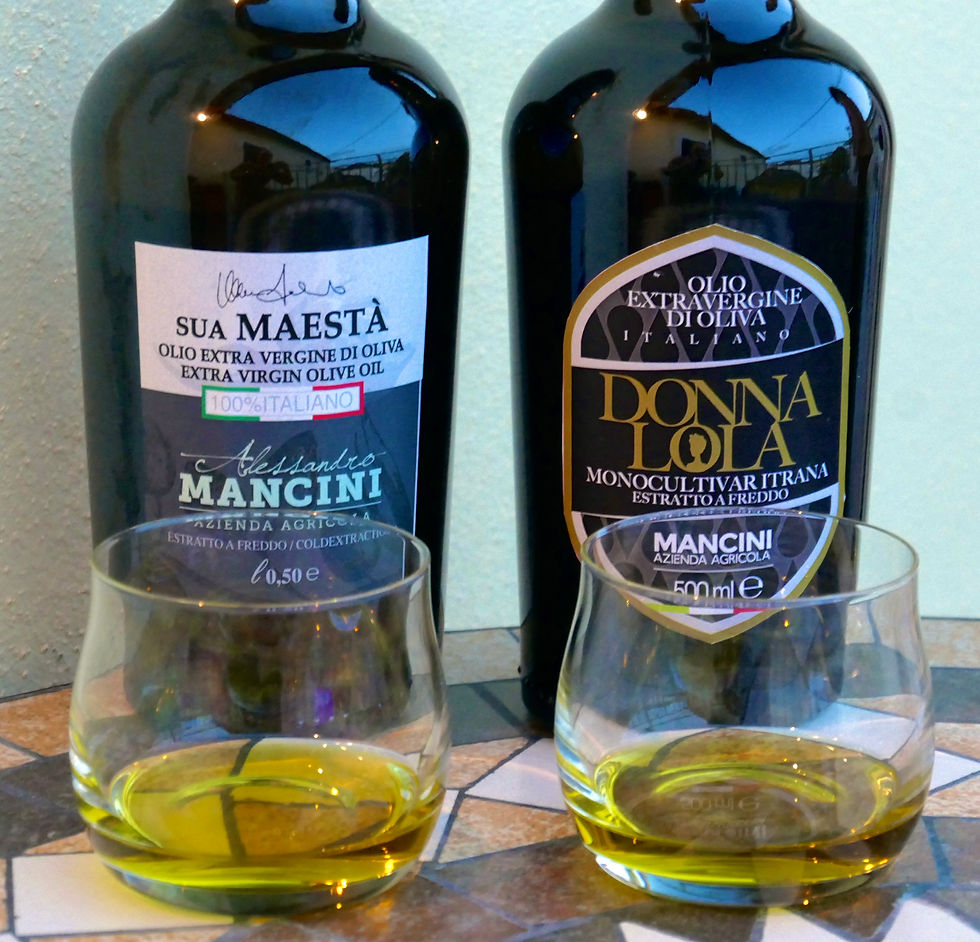
Alessandro is now on the verge of retirement and is passing the torch on to his two sons, Donato and Domenico, who will be charged with maintaining the high standard that Mancini olive oil has reached.
Tasting Notes:
Donna Lola (Itrana olive monocultivar, named in honor of Alessandro's wife (top photo))
The Itrana oil in purezza produces an oil that we like and have written about before and this one also does not disappoint.
There's a powerful aroma here of fresh mown grass and on the palate there's a surprising thickness, definitely an oilier type of olive oil but also with some sweetness. It's quite delicate, but with an attractive peppery finish.
Sua Maestà (blend of Peranzana, Gentile di Chieti and Dritta)
The Peranzana olive is originally from Foggia in northern Puglia, not very far away in fact, and is known for its mild fruity flavor with notes of artichoke. The Gentile di Chieti varietal has more medium fruity, herbaceous characteristics and the Dritta olive also produces oils on the lighter side. The Gentile and Dritta are both widely grown in Abruzzo.
From the above descriptions it's not surprising that the final result of this blend is an oil that is quite subtle and balanced. It's also more complex with notes of arugula and boiled artichoke and finishes with chili pepper, but not in a harsh or unpleasant way.